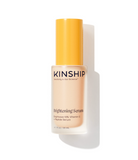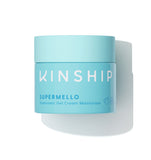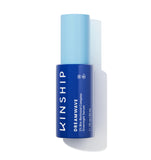Many skincare enthusiasts and beginners alike find themselves confused about the correct order of applying serum and moisturizer in their routine. This can lead to uncertainty and less effective practices.
Your skincare routine order can significantly impact the effectiveness of the products as well as the overall skin health and appearance of the skin.
Understanding the right sequence will help you maximize the benefits of your daily skincare routine and achieve a healthy complexion.
This article aims to clarify the correct order of applying serum and moisturizer, backed by expert opinions and scientific reasoning, to help readers achieve optimal skincare routine results.
We will explore the roles of serums and moisturizers, discuss expert opinions on the order of application, provide a step-by-step guide for proper layering, and explain what does serum do for your skin.
Understanding the Basics of Serums and Moisturizers
Moisturizers and serums are both essential skincare products, but the main difference between serum and moisturizer is that they serve different purposes in a skincare routine. Knowing the differences between them can help you use each product more effectively.
Serums are lightweight, fast-absorbing liquids designed to deliver active ingredients like vitamin C and peptides directly into the skin. They address specific concerns such as fine lines, dehydration, and stimulate collagen production.
Moisturizers, on the other hand, are thicker and create a protective barrier that locks in moisture, preventing moisture loss and environmental damage.
Moisturizers vs serum: Both are essential skin care products, but they serve different purposes in a skincare routine. Understanding their differences can help you choose the right products and use each more effectively.
Both are crucial for a healthy glow, but using them in the correct order ensures you achieve maximum results.
In the following sections, we will discuss the specific roles of these skincare products and how they can contribute to an effective skincare routine.
The Role of Serums in Skincare
Serums are highly concentrated formulations that work as targeted treatments for specific concerns like dark spots, wrinkles, and skin cell turnover.
Because of their smaller molecules, they penetrate deeper into the skin, delivering many benefits more effectively.
This deep penetration allows them to effectively deliver active ingredients to the skin's deeper layers.
Here are some examples of serums from Love Kinship’s catalog, their key ingredients, and how they can impact your skincare routine.
- Brightwave Vitamin C + Peptide Brightening Serum: This serum contains vitamin C and peptides to brighten the skin, reduce the appearance of dark spots, and improve skin texture.
- Self Smooth 10% Glycolic Resurfacing Serum: This serum features 10% glycolic acid to exfoliate the skin, smooth fine lines, and promote skin cell turnover, improving the skin's texture.
- Dreamwave 2% Bio-Retinol Complex Overnight Serum: This serum includes bio-retinol to reduce wrinkles, improve skin elasticity, and rejuvenate the skin while you sleep.
Applying a few drops of serum onto clean skin ensures active ingredients are effectively absorbed and work deeply to address concerns.

The Role of Moisturizers in Skincare
Moisturizers are essential for hydrating properties and preventing moisture loss. This barrier is crucial for keeping the skin soft, smooth, and healthy.
Products like oil-based moisturizers or face moisturizer options for dry skin can provide extra nourishment and reduce skin irritation.
There are different kinds of moisturizers, each type suited for specific skin types and concerns.
- Gel Moisturizers: Best for oily or acne-prone skin, they are lightweight and non-greasy.
- Cream Moisturizers: Ideal for dry or mature skin, providing deep hydration and nourishment.
- Lotion Moisturizers: Suitable for normal or combination skin, offering a balanced level of hydration.
They are essential for maintaining the skin’s moisture balance and overall health. Regular use of moisturizers helps to prevent dryness, flakiness, and irritation.
An example of a great moisturizer is Love Kinship’s Supermello Hydrating Gel Cream Moisturizer. This product contains ingredients like hyaluronic acid, aloe vera, and squalane, which are healthy and nourishing for the skin. Supermello combines natural ingredients like aloe vera and squalane, ensuring the skin stays hydrated and soothe inflammation.
Hyaluronic acid provides intense hydration, aloe vera soothes and calms the skin, and squalane helps to lock in moisture and maintain skin elasticity.

The Debate: Serum Before or After Moisturizer?

The question of does serum come before moisturizer is common.
The general consensus is that serums should be applied before moisturizers to maximize their effectiveness. This order ensures that the active ingredients in the serum can work most efficiently.
Applying serum first allows the active ingredients to penetrate deeply without being blocked by moisturizers' thicker consistency. This deep absorption is crucial for effectively targeting specific skin concerns.
This combination prevents damage caused by dryness and helps achieve a radiant complexion.
However, some experts argue that applying moisturizer first can help those with very dry or sensitive skin by providing an initial layer of hydration and protection.
This approach also creates a buffer that minimizes potential irritation from potent serum ingredients.
Recommended Products
How to Properly Layer Serum and Moisturizer
Properly layering serums and moisturizers is essential to maximize their benefits and ensure effective skincare results.
For those wondering, "Can I use serum and moisturizer at the same time?" the answer depends on personal preference and skin needs. Some prefer to mix them, while others apply them in layers.
You can follow these steps on how to use serum and moisturizer to achieve the best results when layering them:
- After cleansing and toning, apply a few drops of serum to your face and gently pat it on the skin to ensure even coverage.
- Wait a few minutes for the serum to fully absorb before applying moisturizer to seal in the serum and provide lasting hydration.
- Apply moisturizer evenly over the face, ensuring it complements the serum’s effects.
Additionally, you must consider using products suitable for your skin type and concerns to prevent unwanted reactions.
Apply your products in a gentle, upward motion to avoid tugging at the skin. Allow each product to fully absorb before proceeding to the next step. This ensures that each product can work effectively without interference.
Expert Opinions and Recommendations
Dermatologists and skincare experts generally recommend applying serum before moisturizer, emphasizing the importance of ingredient absorption and skin barrier function.
They highlight that serums, with their concentrated active ingredients, need to penetrate the skin deeply to be effective.
For specific skin concerns, consulting with a dermatologist can help create a personalized skincare routine tailored to individual needs.
Dermatologists can provide professional advice and recommend products best suited for your unique skin type and issues, ensuring optimal results.
Common Mistakes to Avoid
When applying a face serum and moisturizer, it is crucial to avoid these common mistakes to ensure the effectiveness of your skincare routine.
- Using too much serum: This can be wasteful and may overwhelm your skin. A few drops are usually sufficient for the entire face. Instead, use a small amount to cover your face evenly.
- Skipping moisturizer: This can lead to inadequate hydration and protection, even for those with oily skin. Moisturizer is essential for maintaining the skin’s moisture balance and should not be omitted.
- Not allowing enough time for each product to absorb fully: This can reduce the effectiveness of the products. Allow a few minutes for each layer to absorb before applying the next one to ensure optimal results.
- Applying products in the wrong order: This can hinder the penetration and efficacy of the active ingredients. Always apply serum before moisturizer to allow the serum’s active ingredients to penetrate deeply and the moisturizer to lock in hydration.
Frequently Asked Questions (FAQs)
What Are the 7 Steps of Skincare?
A comprehensive skincare routine typically involves several steps to ensure your skin remains healthy, hydrated, and glowing. Here are the seven essential steps of skincare, along with how to do each one and its purpose.
- Cleansing: Use a gentle cleanser to remove dirt, oil, and makeup from your face. This step is crucial for maintaining clear and healthy skin by preventing clogged pores and breakouts.
- Toning: Apply a toner to help balance the skin's pH and remove any remaining impurities. Toners can also help to hydrate and prepare the skin for the next steps.
- Exfoliating: Use an exfoliant 1-2 times a week to remove dead skin cells and promote cell turnover. This step helps to keep the skin smooth and can improve the effectiveness of other skincare products.
- Applying Serum: Apply a few drops of serum, such as our Self Smooth10% Glycolic Pore Minimizing Toner-Serum, to your face and gently pat it on the skin. Serums deliver concentrated active ingredients that target specific skin concerns like wrinkles, dark spots, and dehydration.
- Moisturizing: Use a moisturizer to hydrate and protect the skin. This step is essential for maintaining the skin’s moisture balance and overall health.
- Applying Eye Cream: Gently apply eye cream around the delicate eye area to address issues like puffiness, dark circles, and fine lines. Eye creams are formulated to be gentle and effective for this sensitive part of the face.
- Sun Protection: Apply a broad-spectrum sunscreen with at least SPF 30 to protect your skin from harmful UV rays, like our Self Reflect Zinc Oxide Mineral Sunscreen. With a SPF 32 formulation, it is vital for preventing premature aging and sunburn.
These steps create a well-rounded skincare routine that can address various skin concerns and help practitioners maintain healthy, radiant skin.

Is It Better to Use Serum at Night or Day?
Serums can be applied as part of either your morning or evening routine, depending on the ingredients and your skin type.
For those with oily skin, it is recommended to apply serum during your evening regime to help reduce excess oiliness throughout the day.
Meanwhile, some serums, such as those with vitamin C, niacinamide, and hyaluronic acid, are better suited for morning use to protect and hydrate the skin throughout the day.
Other serums, like retinol, should be used at night, as they can increase sun sensitivity and are more effective when used during the skin’s nighttime repair process.
Key Takeaways on Serum Before or After Moisturizer
Applying skincare products in the correct order can enhance their effectiveness, leading to healthier, more radiant skin. Proper layering ensures that each product can penetrate and work as intended, maximizing its benefits.
Apply face serum vs moisturizer in the correct sequence for desired results and additional benefits. Use natural ingredients to maintain skin balanced and reduce adverse reactions.
Additionally, incorporating anti-aging benefits with serums like vitamin C serum can be a game changer in your routine.
Serums deliver concentrated active ingredients to address specific skin concerns, while moisturizers provide essential hydration and protection.
Whether you apply serum or moisturizer first, choosing the right vegan skincare products and using them effectively can help you achieve a healthy complexion and keep your skin plump and glowing.
Recommended Products



